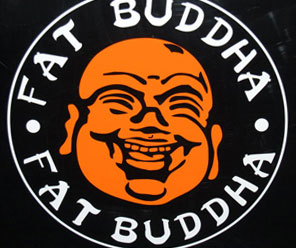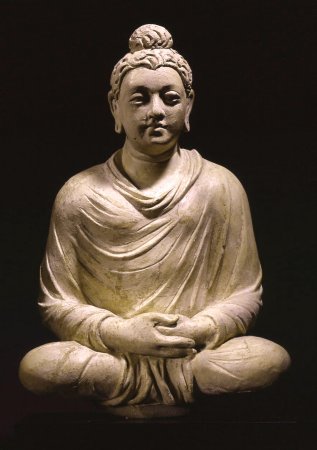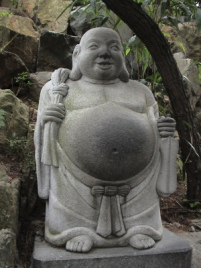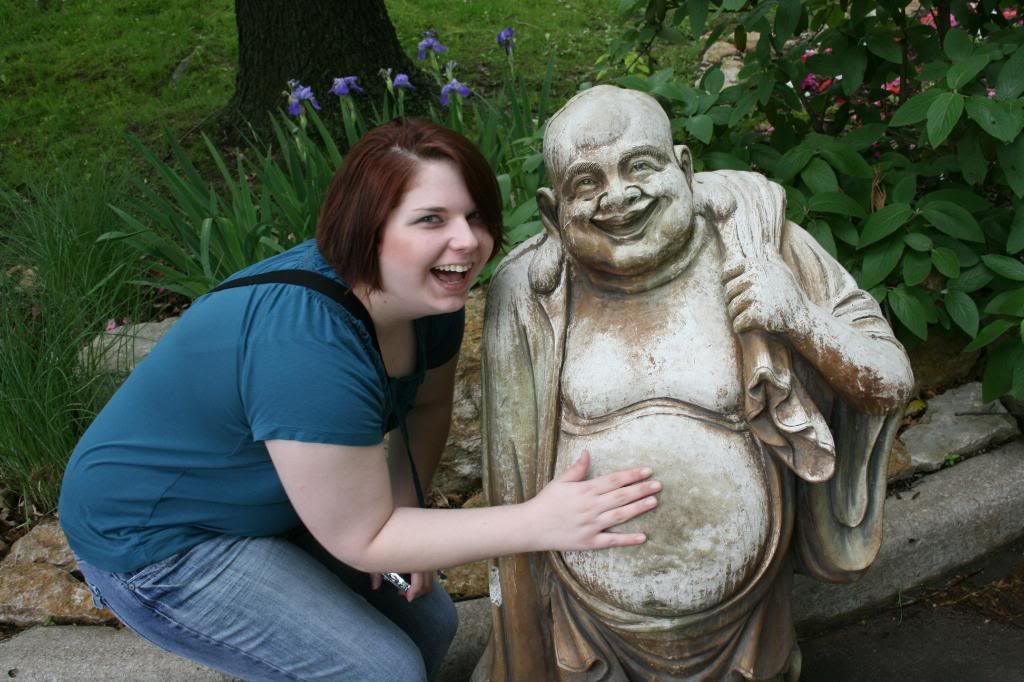
I responded, "Well, I do not worship Buddha. He was teacher that was trying to teach people how to live a spiritual life. I do not know how he got the fat guy image because through much of his life he was an ascetic, and he spent a great deal of time starving himself."
My zealous assailant sneared a "you are going to hell" as he walked away. Not a pleasant fellow.
This question about Buddha's health came up today when a coworker asked about why the picture of Buddha on my desk was lean, when all the Buddhas at her Chinese restaurant were fat. I had a pretty good idea, but I researched it and here is what I found.

notmrjohn at Answer Bag wrote to this query...
The "Fat buddha" is not THE Buddha, Siddhartha Gautama, and strictly speaking the statue is not an idol.Buddha means "one who has achieved a state of perfect enlightenment" and there are several people who have been given the title. Siddhartha lived from around B.C. 560 to B.C. 480, it was not until around 127 BC that statues actually depicting him became prevalent.

Before that, and still today, statues of the Bodhi Tree and other objects associated with his life were common. Of course by then nobody knew what he really looked like, he was from a noble family and had been described as tall, slender, and of "manly build", but that may have been just because that is what people expected "Nobles" to look like, we still expect that today, few movie heroes are short and squat. And the image of a fat overfed Buddha didn't fit with his teachings, and an "enlightened one" might be so enlightened as to disregard material needs like eating, probably not to the extent of the Hindu mystics but probably influenced by them. The style of the statues was influenced by the various cultures that influenced all culture in the sub-continent (India), Greek styles early on, then Roman, Persian and others. And by the cultures in areas where his teachings spread, and now we finally get to the Fat buddha. Buddhism reached China around 100AD, and was wide spread there by 600AD.
And we get three theories on Fat buddha, each one probably reinforced the others over time.
1.First the physical image of a Noble was different as was the concept of the results of enlightenment, a Noble was not athletic or a warrior, but a well fed person of leisure. Enlightenment led to material success and wealth and a position at least close to nobility. And a belief that fat men were inherently benevolent , similar to the "jolly fat man", Jolly Ol' St. Nick for example. Just as baseball players still try to rub a red headed players head for luck, people tried to rub a fat man's belly in hopes of luck and ample meals.

2. Then there is the story of a Chinese Buddhist monk in the 6th century, who just happened to have a belly that shook like jelly, he was a benevolent fellow who dedicated himself to helping others, and was regarded as the incarnation of the Boddhisatva Metteya, who had reached nirvana but stayed around just to help people.
3. And finally the theory held by most Buddhist scholars. A sagely Zen monk appeared in China around 850 A.D. and died in 916A.D. He said his name was "Knowing This" (ChiChe). No one knew where he came from, he carried a big fat bag and was famous for his fat belly. When asked how to obtain nirvana he would lay down the bag and not said a word. When asked about what happened after reaching nirvana. he would pick up the bag and walk away, still not a word. It is pretty much accepted that such a monk existed. He is probably the inspiration for Fat buddha, as the statues began appearing in the late 800's, 1200 years after the Gautama's death. If you'll look at an authentic Fat buddha, you'll see he has a sack on his back, in fact his names include Hotei, Pu-Tai AND Mi-Le-Fo (Cloth Sack.) Then again the appearance of the statues may have influenced the legend of, or the actual, monk.

At any rate, rubbing the belly of a fat buddha statue is not a prayer or idolatrous it's just a more or less superstitious habit and the rubber may or may not really believe it any more than someone knocking on wood or tossing salt.
Blackcats is somethin else again and I keep statues of them, fat or scrawny, in a big sack buried under a big tree.








I got the half-Buddha belly now.
ReplyDeleteWorking on the full Buddha...
No budda belly but it's available to be rubbed if your sexy enough.
ReplyDelete